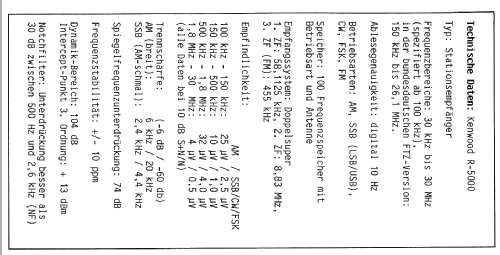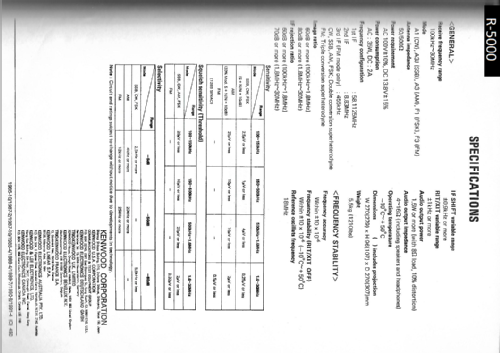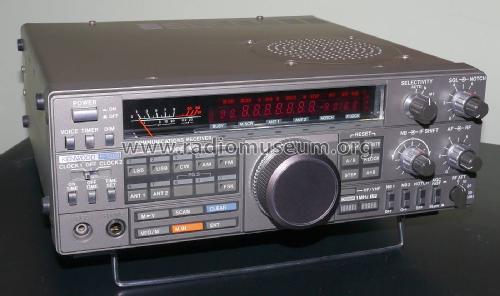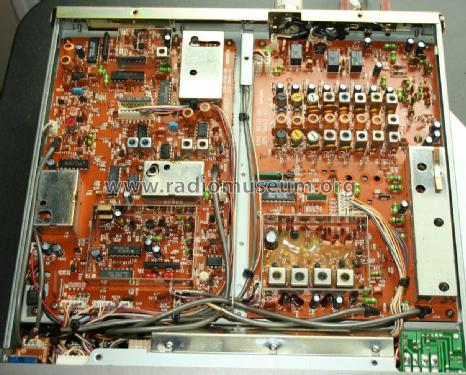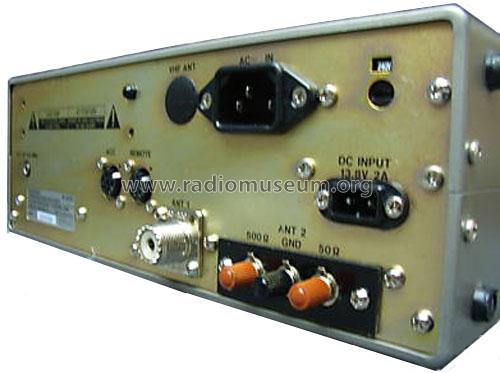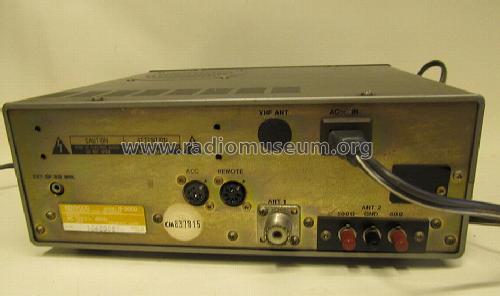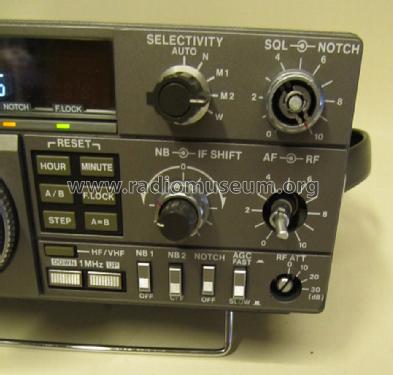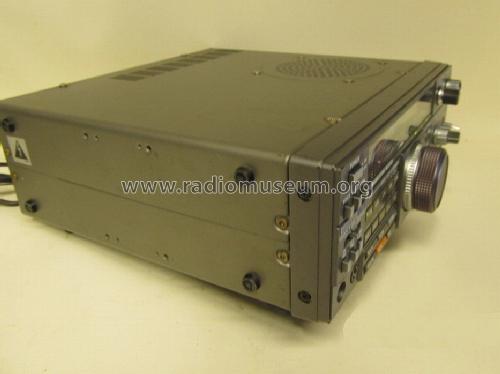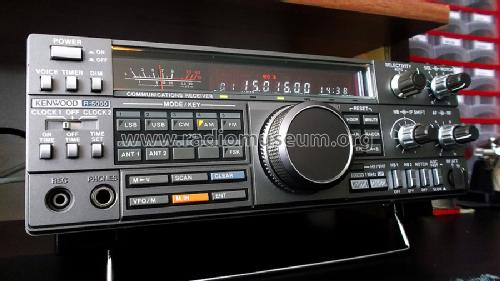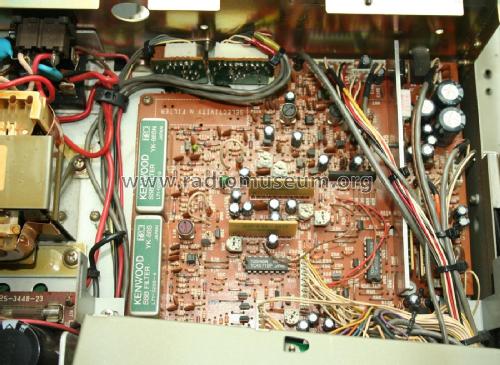- Country
- Japan
- Manufacturer / Brand
- Kenwood, Trio-Kenwood Inc.; Komagane
- Year
- 1987
- Category
- Amateur-Receiver (amateur bands, may include broadcast bands)
- Radiomuseum.org ID
- 81346
-
- alternative name: Trio Corp.
- Brand: Jennen
Click on the schematic thumbnail to request the schematic as a free document.
- Number of Transistors
- Semiconductors present.
- Semiconductors
- Main principle
- Superhet, double/triple conversion; ZF/IF 58115/8830/455 kHz
- Wave bands
- Wave Bands given in the notes.
- Power type and voltage
- Alternating Current supply (AC) / 120; 230 Volt
- Loudspeaker
- Permanent Magnet Dynamic (PDyn) Loudspeaker (moving coil)
- Power out
- 1.5 W (unknown quality)
- Material
- Metal case
- from Radiomuseum.org
- Model: R-5000 - Kenwood, Trio-Kenwood Inc.;
- Shape
- Tablemodel, with any shape - general.
- Dimensions (WHD)
- 269 x 96 x 269 mm / 10.6 x 3.8 x 10.6 inch
- Notes
- Kenwood Communications Receiver R-5000.
Coverage 100-30000 kHz; AM, USB/LSB, CW, FM; digital readout 10 Hz; direct keypad frequency entry; 100 memories; clock/timer, IF-shift; notch. External power supply 13.8 V possible.
Optional: external speaker SP-430; VHF converter VC-20 covering 108-174 MHz; voice synthesizer; RS-232 port and different IF-filters.
- Net weight (2.2 lb = 1 kg)
- 5.4 kg / 11 lb 14.3 oz (11.894 lb)
- Price in first year of sale
- 2,248.00 DM
- Source of data
- Shortwave Receivers - Past & Present (3rd ed.)
- Mentioned in
- beam Amateurfunk-Geräteführer '90
- Literature/Schematics (1)
- Funkschau (11/1987, S. 28 - 30 / Erfahrungsbericht)
- Author
- Model page created by Martin Bösch. See "Data change" for further contributors.
- Other Models
-
Here you find 904 models, 839 with images and 252 with schematics for wireless sets etc. In French: TSF for Télégraphie sans fil.
All listed radios etc. from Kenwood, Trio-Kenwood Inc.; Komagane
Collections
The model is part of the collections of the following members.
Literature
The model is documented in the following literature.
Forum contributions about this model: Kenwood, Trio-: R-5000
Threads: 2 | Posts: 3
Hello,
I tried to upload a schematic of this short wave receiver, but got a message the file being to big. The size of the pdf file is 1.5MB. How can get around this problem?
Thanks, Miklos
Miklos Cseke, 30.Sep.10
Der R-5000 enthält einen 3V-Akku (CL2020) als Backup für die beiden Uhren sowie den Speicher für 100 Frequenzen. Mit der Zeit verliert dieser Akku seine Kapazität.
Dieses fällt erst auf wenn der R-5000 mehrere Stunden vom Netz getrennt war (Der POWER-Schalter auf der Frontseite schaltet nur die internen 12VDC) In diesem Fall bleiben die internen Uhren stehen, die Memories sind noch nicht betroffen.
Der Ersatz des CL2020 ist wegen der Einbaulage hinter einem Abschirmblech auf der "Control-Unit" als Teil der Frontplatte sehr zeitaufwendig.
Der CL2020 ist ein 3V Akku mit 20mm Durchmesser, 2mm dick mit Lötfahnen. Alle Details findet man im "R-5000 Service Manual" von Kenwood (Gab es 1988 gedruckt und heute wohl im Internet als *.pdf).
Eine einfache Lösung ergibt folgender Umstand:
Die Anschlüsse des CL2020 sind direkt mit dem Netzteil (AVR-Unit) verbunden. Diese AVR-Unit lässt sich mit wenig Aufwand ausbauen.
Hier habe ich zwei in Serie geschaltete 1.2V Ni-MH AA-Akkus angeschlossen. Natürlich ist dies von der Kapazität her ein Overkill, aber in einem Batteriehalter für 2xAA passt das Ganze perfekt in das Blechfach der optionalen Voice Synthesis Unit (VS-1).
Das Ganze funktioniert seit fast einem Jahr einwandfrei.
Bei Interesse kann ich weitere Details hierzu liefern.
Klaus Eggert, 03.Apr.09
